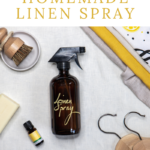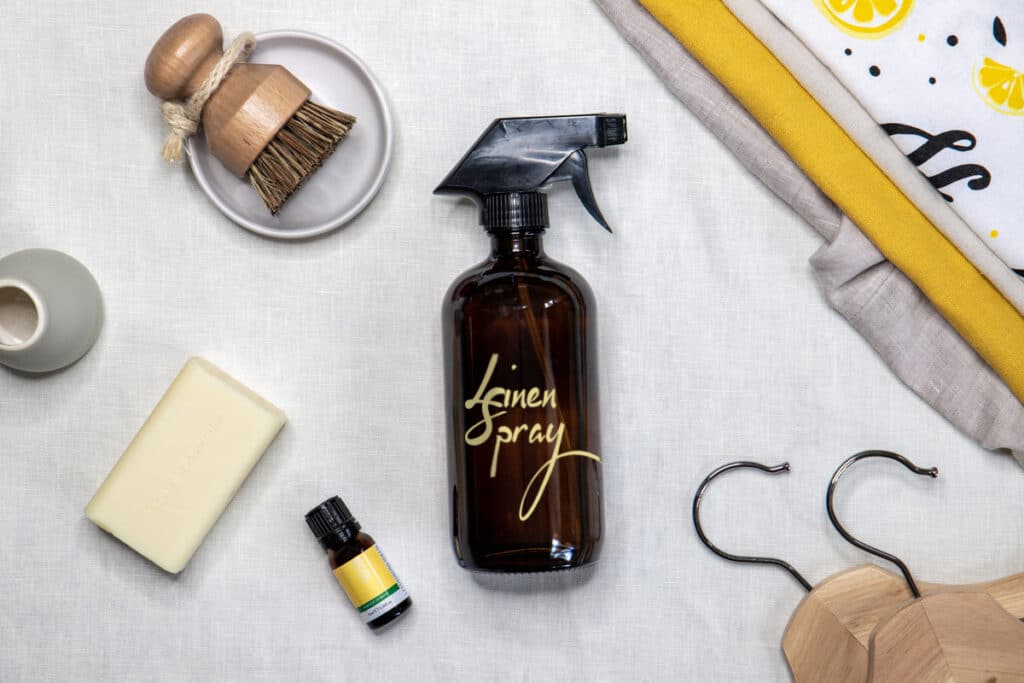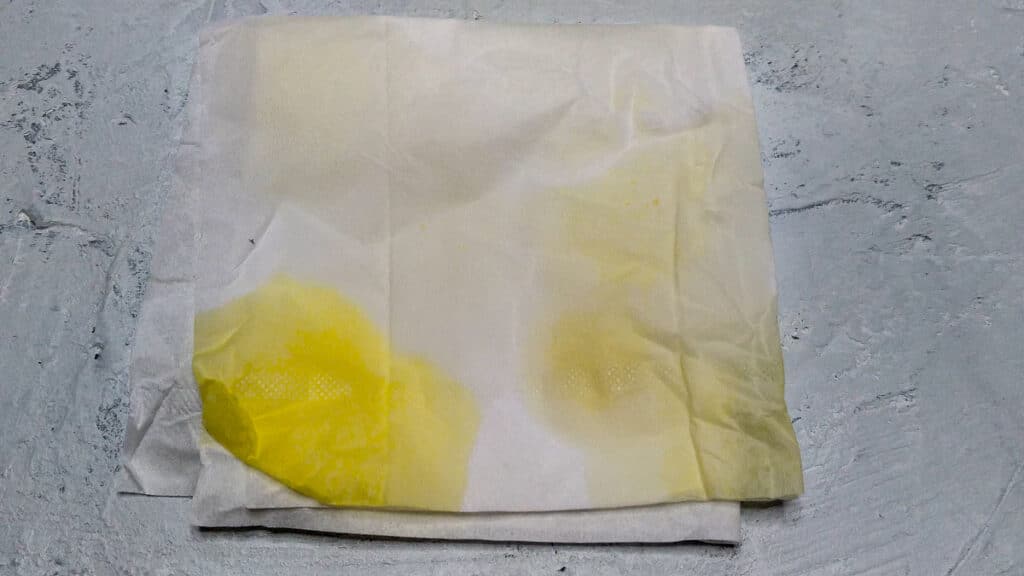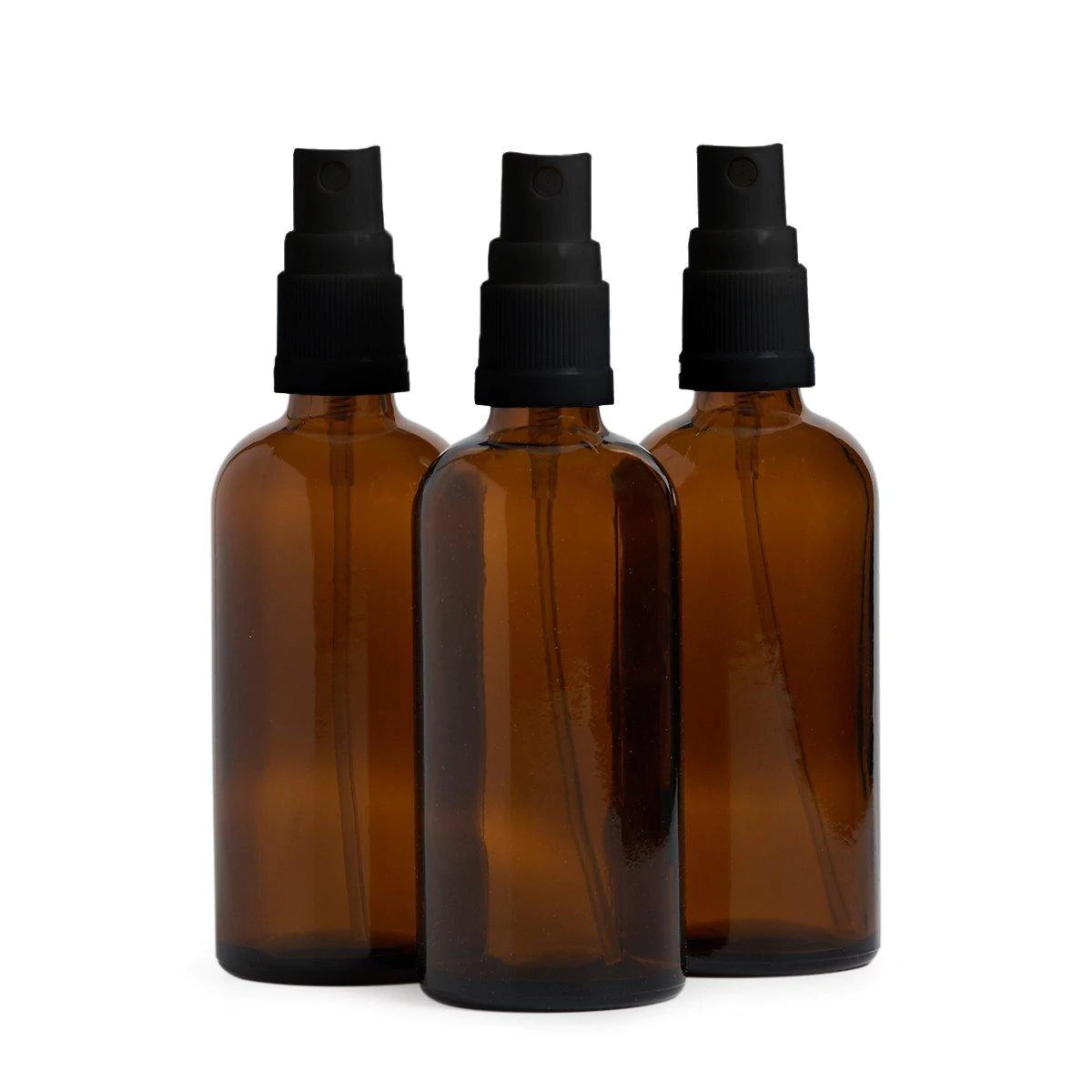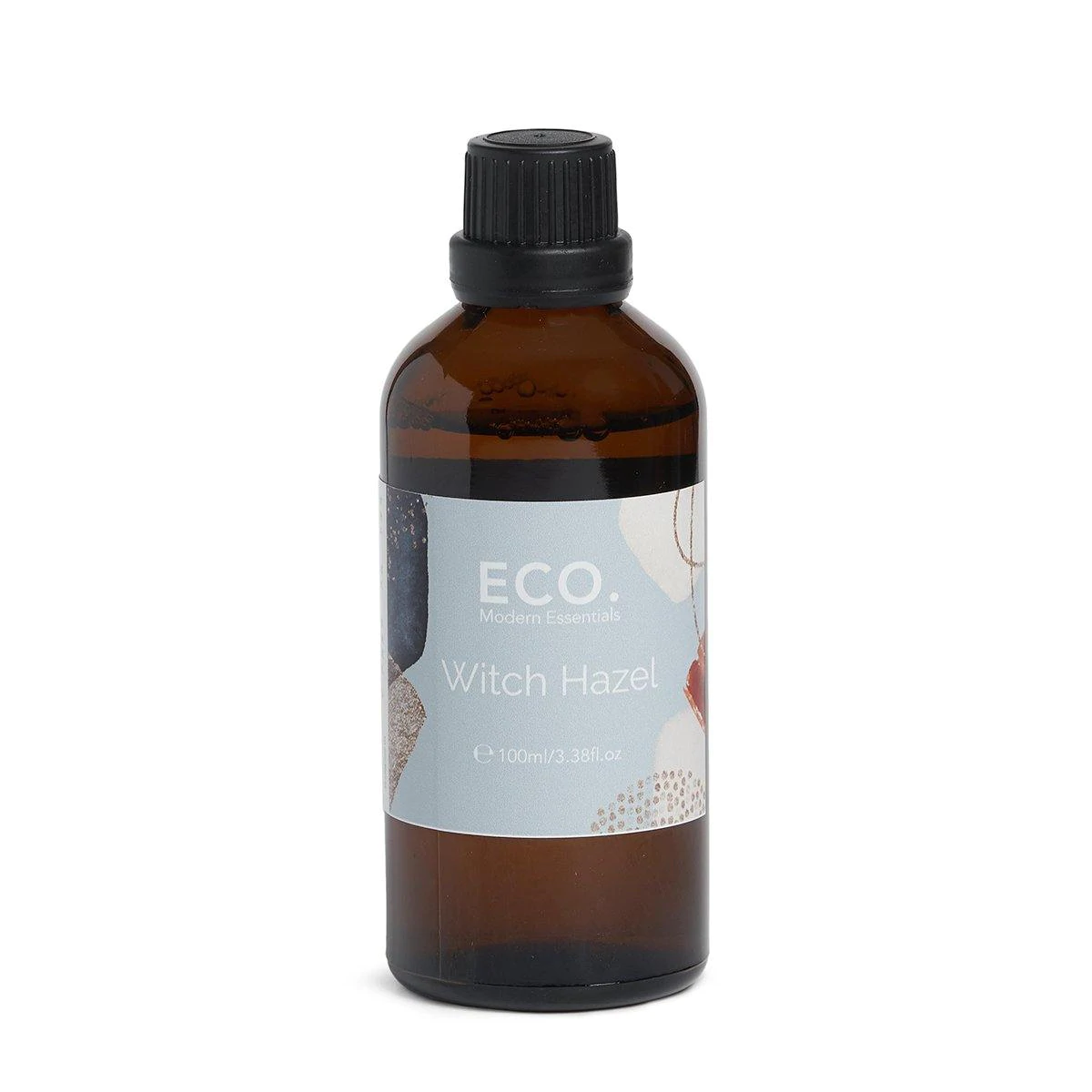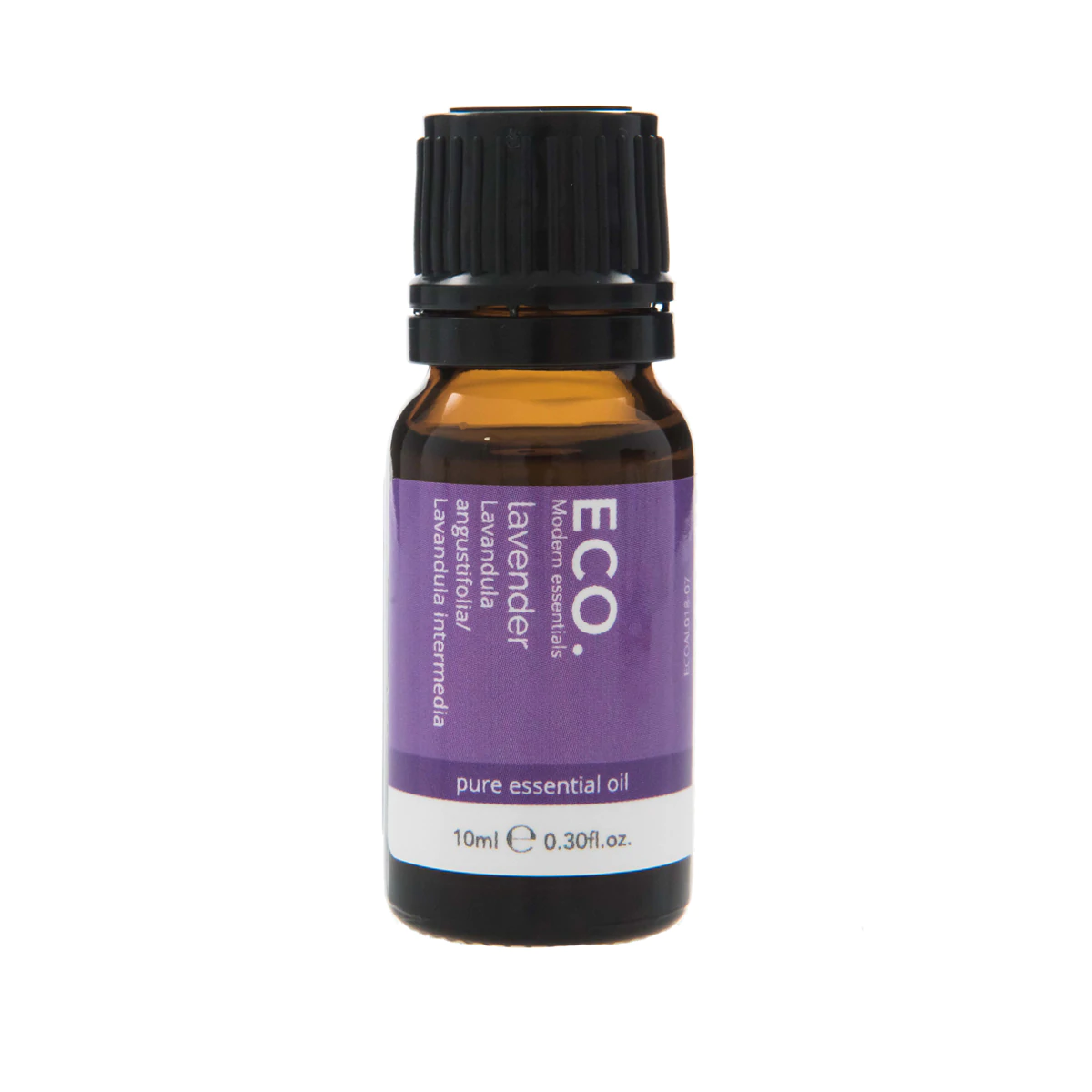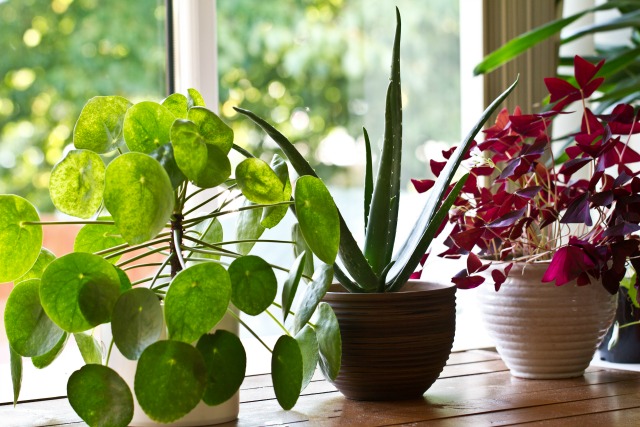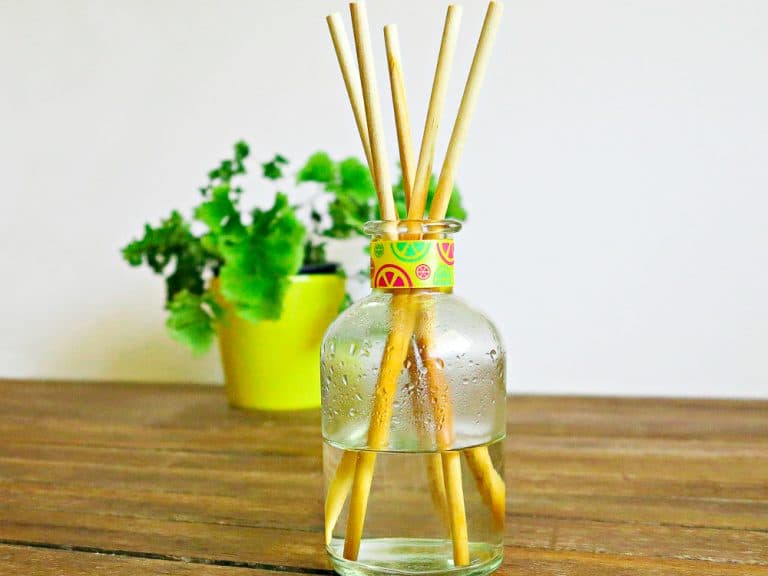Scents Sensibility – Enhance Your Home with Homemade Linen Spray / Air Freshener
This website may earn commissions from purchases made through links in this post.
Homemade linen spray is inexpensive and has a range of uses, including freshening a room and freshening the bed. DIY linen spray recipe.
For me, the idea of linen spray conjures up images of country manors, real French linen, flowers in the entryway and my grandmother’s wrinkly skin against my cheek, which was as soft as velvet.
It never occurred to me to introduce such a luxury (and the price of store-bought linen spray definitely puts it into the luxury category) into my own homemaking routine.
But I’ve since come around to the benefits of a good homemade linen spray using essential oils. Homemade linen spray is a fraction of the cost of store-bought spray, and it’s made with natural ingredients. You can also customise the scent to suit your preferences or the purpose you’re spraying it for.
What Is Linen Spray Used For?
Linen spray is used to freshen the smell of linens and add a pleasant fragrance to your living space. It can be sprayed on linen and soft furnishings to help mask odours and infuse a refreshing scent.
Here are some of the ways you can use linen spray:
- Spray on soft furnishings like the lounge, curtains, carpets, rugs and bedding to freshen between washes
- Use as an ironing aide for fresh-smelling clothes
- Use as a pest deterrent
- Spray clothes to keep fresh between washes
- Use as an air freshener
- Spray in the car
- Use in the closet to keep clothes fresh and bugs away
- Spritz on your pillow at night to aid in sleep
- Spray on your skin as a skin freshener
- Spray on soft furnishings to freshen
While linen spray can temporarily mask odours, it doesn’t replace the need for cleaning. Cleaning and deodorising are still necessary for the homemaking routine; linen spray can be a delightful-smelling adjunct to cleaning.
The Benefits of Using Linen Spray
Linen spray doesn’t just mask stale smells of fabrics between washing.
Lavender is purported to have a calming effect and is used as a sleep aid. Spraying your pillow with a little lavender linen spray may help you get a good night’s sleep.
When we were sick, I made a Eucalyptus spray to use around the house to clear the air and help us breathe easier.
When you make your own linen spray, it’s a lot cheaper than store-bought. You can customise the scents to suit your tastes or purpose. You can also use pure essential oils rather than artificial fragrances, which many commercial air fresheners use.
Homemade linen spray would also be a great gift, especially if put in a nice bottle. Commercial linen spray in one of those fancy gift and homewares stores can cost a tonne of money. Making your own can be a nice gift at a fraction of the cost.
Homemade Linen Spray Ingredients – What You Need
To make linen spray, you will need the following:
- a spray bottle
- distilled water
- witch hazel or vodka
- Essential oils
Spray bottle
I purchased the glass spray bottle pictured above at Target (AU). Bunnings also sell them. If you’re looking for them online, you can get them on Amazon, and Eco Modern Essentials, where I get my essential oils, which also stock large and small glass bottles.
You can also get inexpensive plastic bottles at craft stores and discount stores.
Distilled Water
Using distilled water instead of tap water avoids any potential impurities that can affect the quality or longevity of the linen spray. Distilled water is free from minerals and contaminants, ensuring a purer base for your spray.
You can buy distilled water in the supermarket in the cleaning section.
TBH, I use (Brita) filtered water and have never had a problem. If I was making this for a gift, I might use distilled water instead.
You could also use rainwater or boiled water.
Witch Hazel
I love the name witch hazel; it makes me feel like I’m living in a little fantasy novel inside my head while I mix up a batch of homemade spray.
Witch hazel helps the oil and water mix together. It can be found in the supermarket alongside face cleansers and toners because it’s also used as an alcohol-free face toner.
If you don’t have witch hazel, you can use plain vodka instead, although vodka is more expensive. The alcohol content of vodka can give you linen spray mild odour-neutralising properties as well as very (very) mild anti-bacterial qualities. It is also quick-drying.
Essential Oils
The scent comes from essential oils.
I currently get my Essential Oils from one of our affiliates Eco Modern Essentials, an Australian company and not an MLM like many other essential oil brands.
Which Essential Oils Can You Use in Linen Spray?
The great thing about making your own linen spray is customising it to your tastes.
Some popular linen spray scents include:
- Lavender
- Chamomile
- Citrus
- Eucalyptus
- Peppermint
- Rose
Lavender is a favourite scent for linen spray and lavender room spray, and it’s one of the less expensive oils. It is purported to help you sleep.
Eucalyptus spray is good for when you’re fighting the flu. It can help you breathe easier.
Peppermint or citrus are uplifting and refreshing oils, and they can also help repel insects. They are also amongst the cheapest essential oils.
Rose or Rose Geranium is a personal favourite of mine but also a popular scent you see in gift stores.
Creating Custom Essential Blends for a Unique Linen Spray
You can blend your favourite scents for a custom fragrance unique to your home. There are a billion ways to combine scents; the best way to start is to Google blends using the essential oils you have and experiment.
An alternative to creating your own blend is to buy a pre-blended oil. Using a blend saves you money because you only need to buy one bottle. Eco Modern Essentials have a heap of blends to choose from. My current favourite is Calm and De-stress, something we have all needed in the upheaval of the last couple of years.
Essential Oil Precautions
While natural, you still need to use precautions with essential oils, especially if you use them on your skin or around small children and pets.
Before using, Google your chosen oil(s) to ensure they are safe for children and pets.
When spraying on soft furnishings, test on a tissue or an inconspicuous place first to ensure there’s no staining. Below is an example of seven different undiluted essential oil blends tested for staining:
As you can see, some undiluted blends have quite a bit of colour staining. The staining will be less once diluted in water; however, you will still want to patch test.
The best essential oils to use are ones that don’t have any colour. Patchouli, for instance, is a thick, yellow oil and should be used with caution in case of staining.
How to Make Linen Spray Without Essential Oils
Prefer not to use essential oils?
You can make linen spray by infusing water or vodka with flower petals, vanilla beans, herbs, citrus peel, or other scented botanicals before straining and mixing in a spray bottle. The scent will be much subtler than essential oils.
Alternatively, you can use hydrosol or floral water, which is a by-product of making essential oil. It is basically the scented steam left over from the distillation process. The upside of using hydrosol is that it is less likely to stain.
How to Use Linen Spray
To use linen spray, shake the bottle before spraying.
If you’re using it for the first time, patch test in an inconspicuous place or on a tissue to test for staining.
Hold at a distance to spritz your bedlinen, curtains, soft furnishings or towels so the mist can disperse evenly without soaking the fabric. Spray lightly as a little fragrance goes a long way. Allow to dry.
To use as a bed freshener, spray the bed lightly in the morning then air the bed out, letting the sheets dry completely before making the bed.
To use as an air freshener, spitz a couple of times into the air in a room. You can also spray the couch or curtains (as long as you’ve patch-tested first) and then let them dry before sitting down.

I like to spray the front screen door just before visitors arrive to make a good first impression. Be aware though, some people have allergies to fragrances, so spray lightly or avoid spraying unless you know they don’t have an allergy.
Natural Linen Spray Recipe
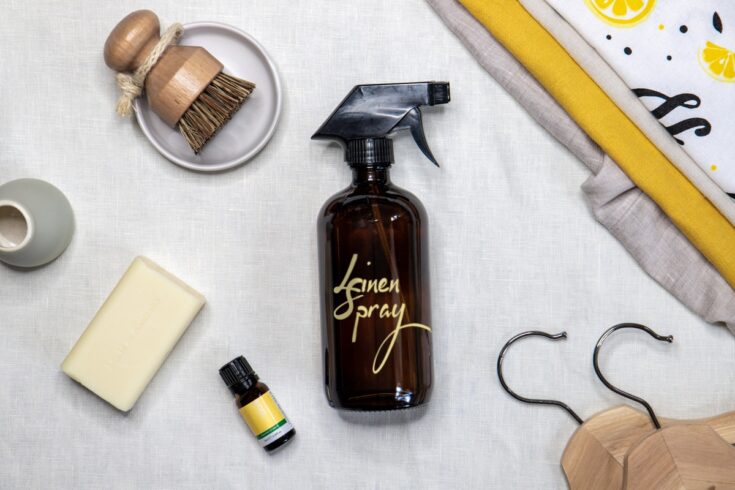
Homemade linen spray is a delightful all-natural way to add a gentle fragrance to your home. Here's how to make it with just three ingredients.
Materials
- 3 parts water (filtered, distilled or rainwater preferable)
- 1 part witch hazel
- 30 drops per 100mls of your favourite essential oils/oil blends (use less for a more subtle scent)
Tools
- Spray bottle
- funnel (optional)
Instructions
- If using a 100ml bottle, add 75ml of water, 25 ml of witch hazel and 30 drops in total of your favourite essential oils. Scale up or down according to the recipe.
- Shake well before use.
Notes
Some essential oils stain, so patch test on a tissue to check for staining first.
Recommended Products
As an Amazon Associate and member of other affiliate programs, I earn from qualifying purchases.

